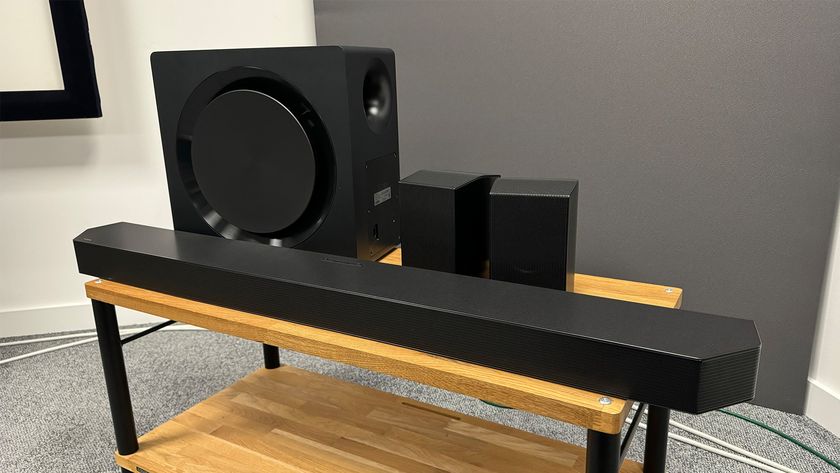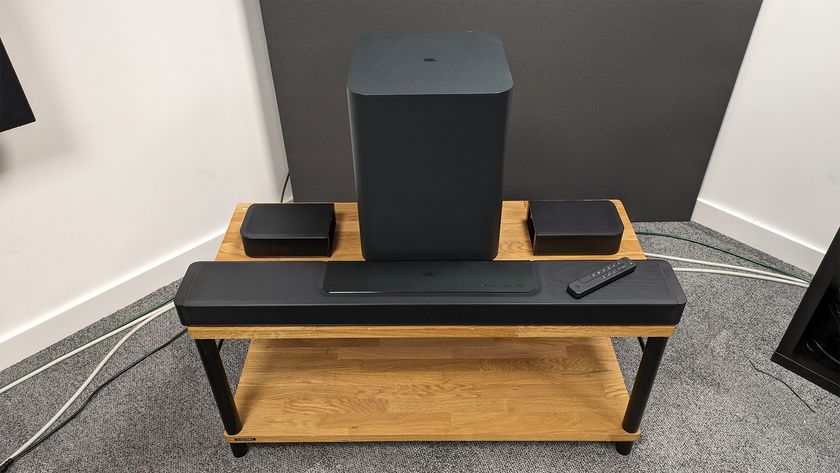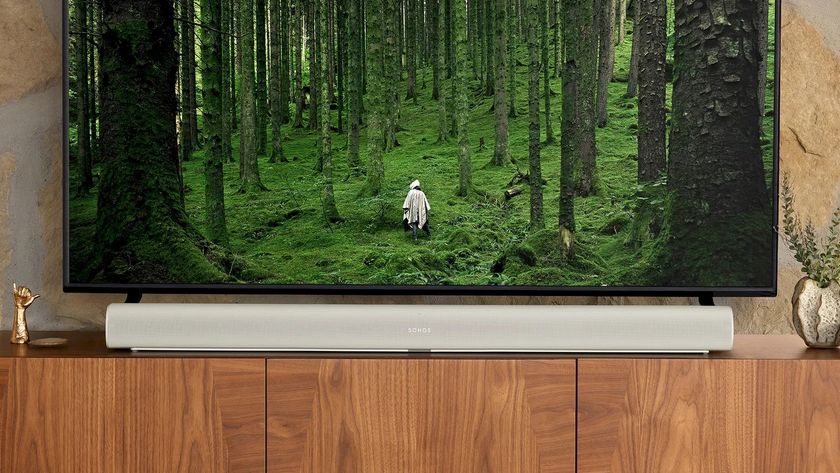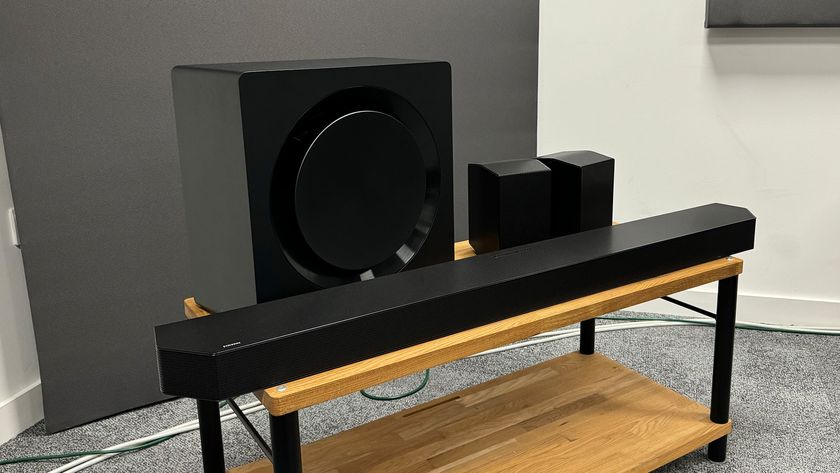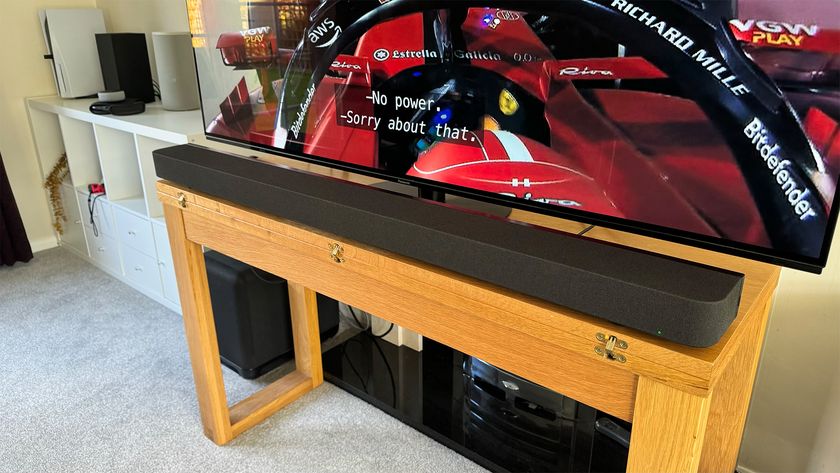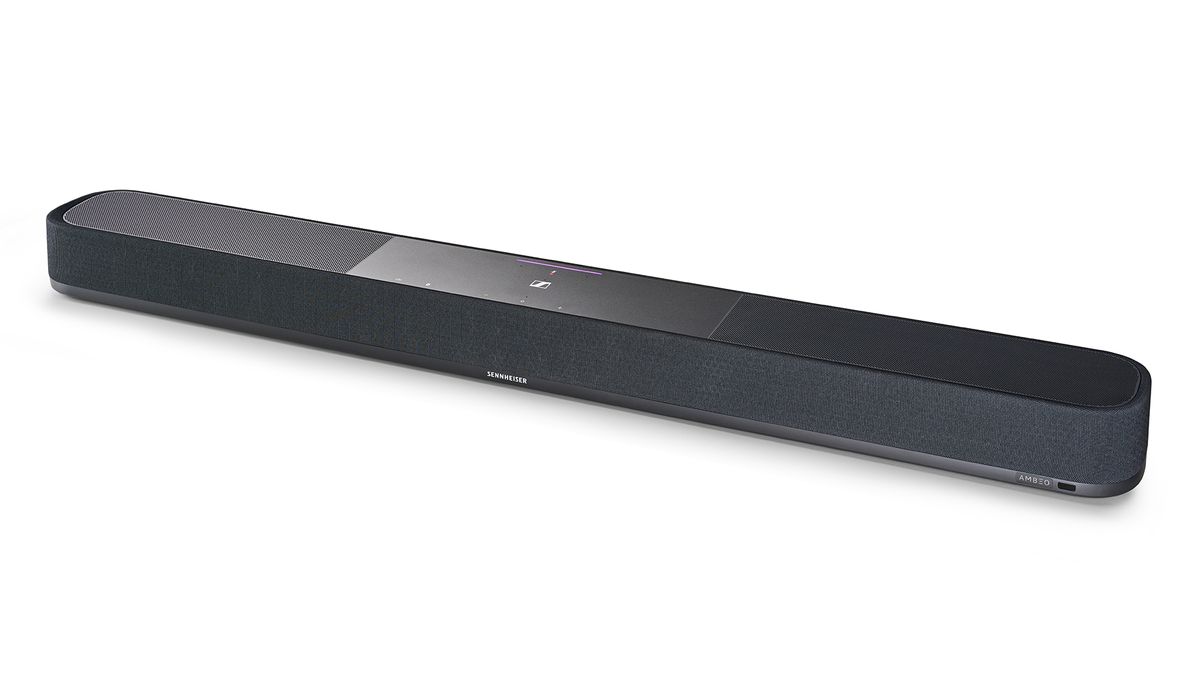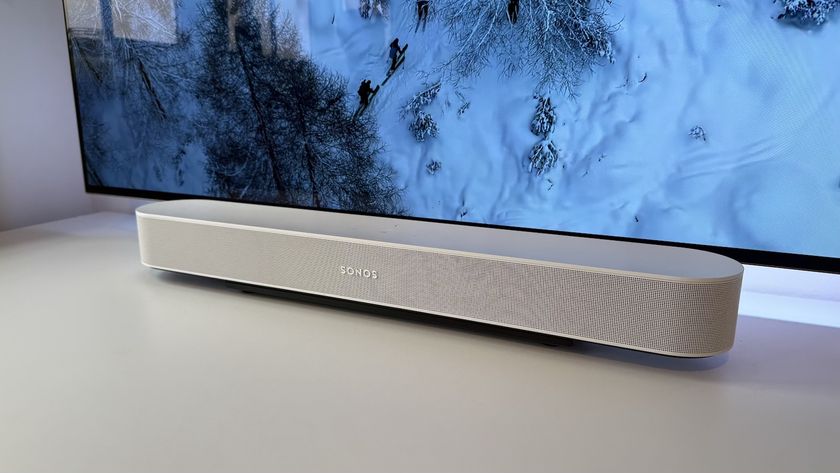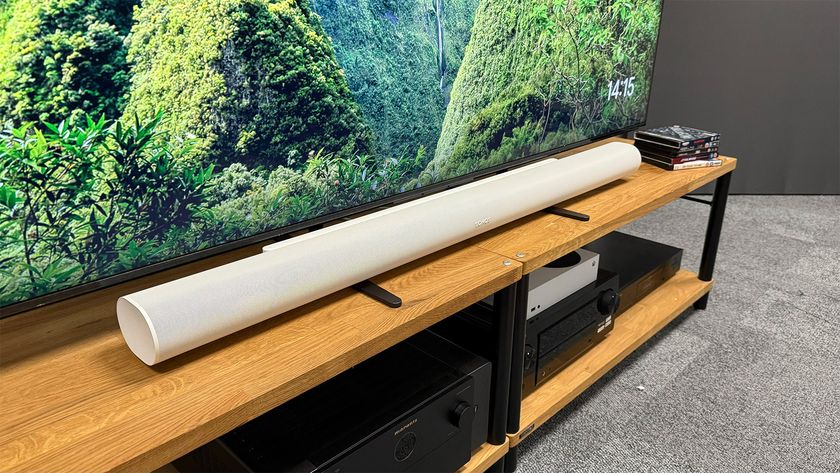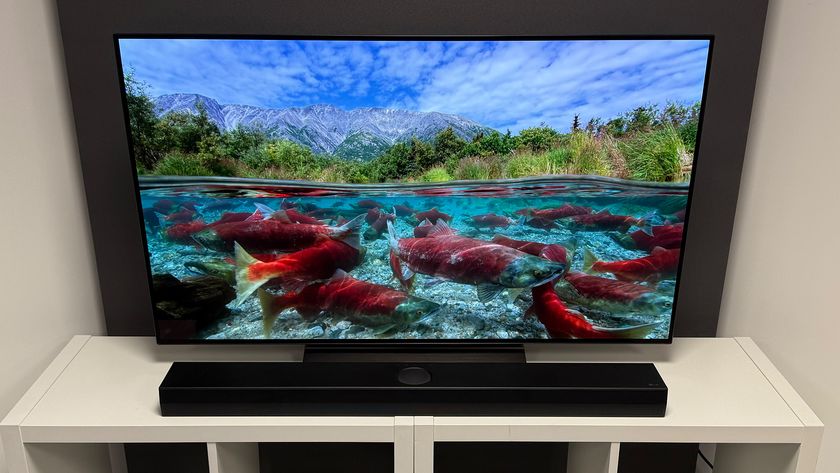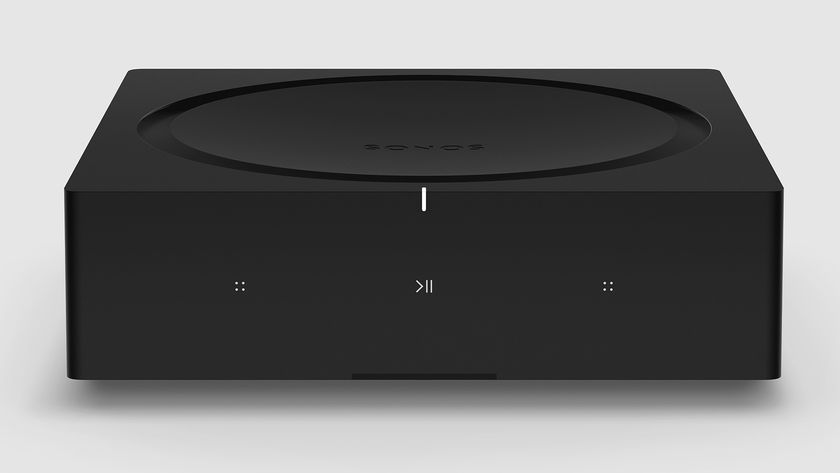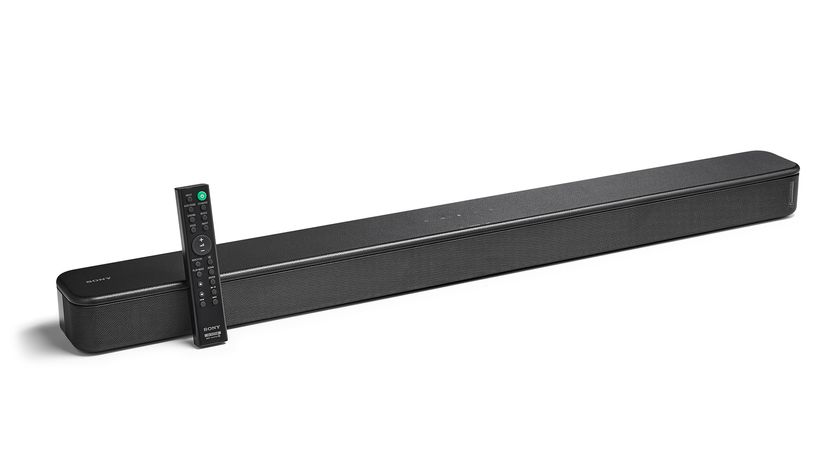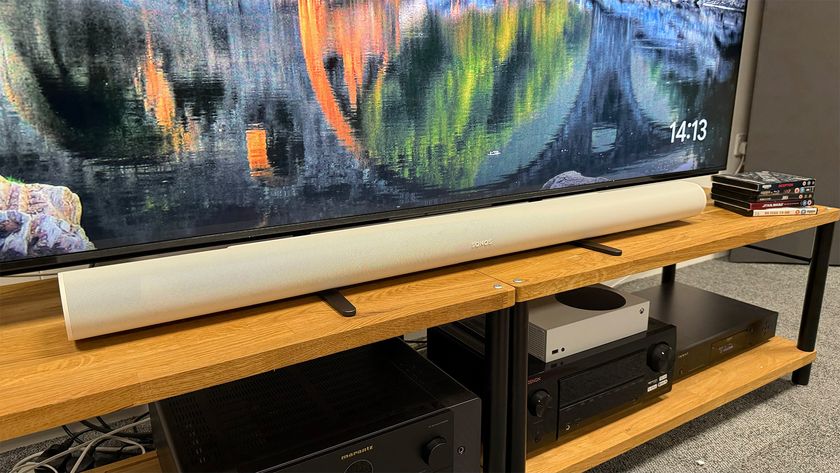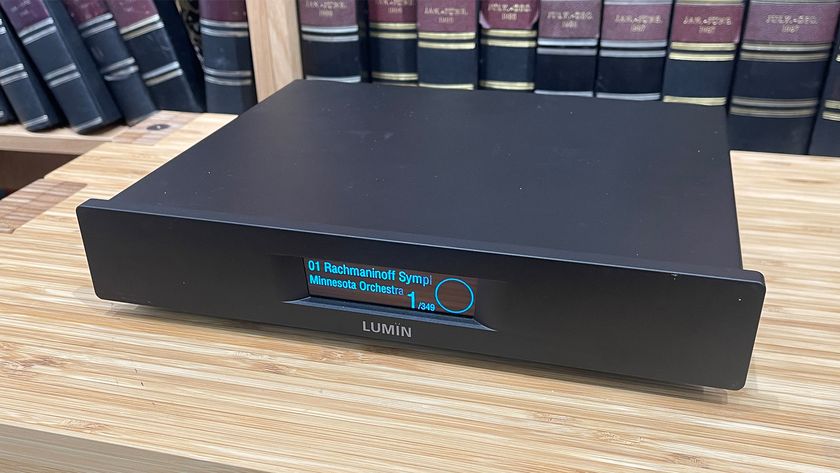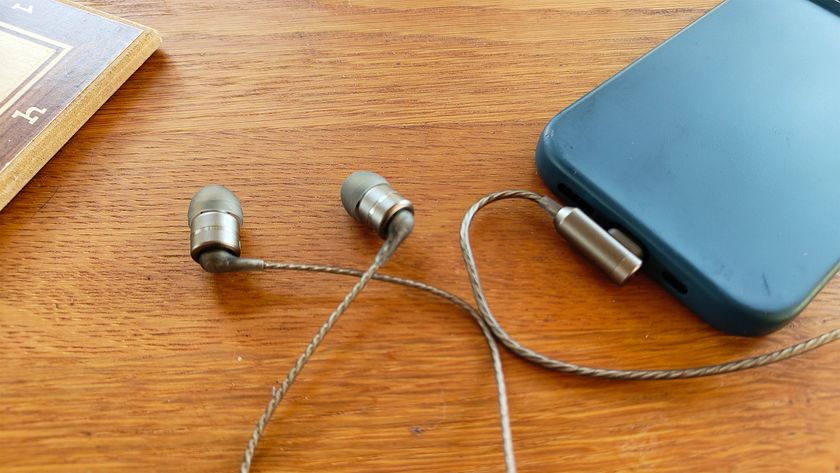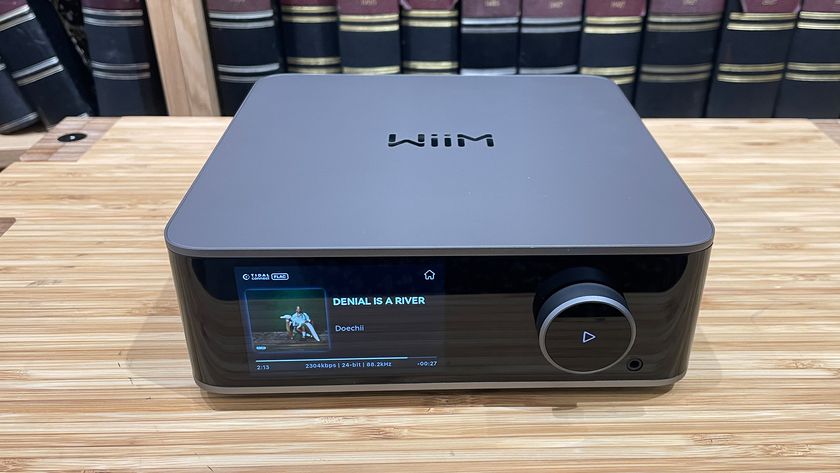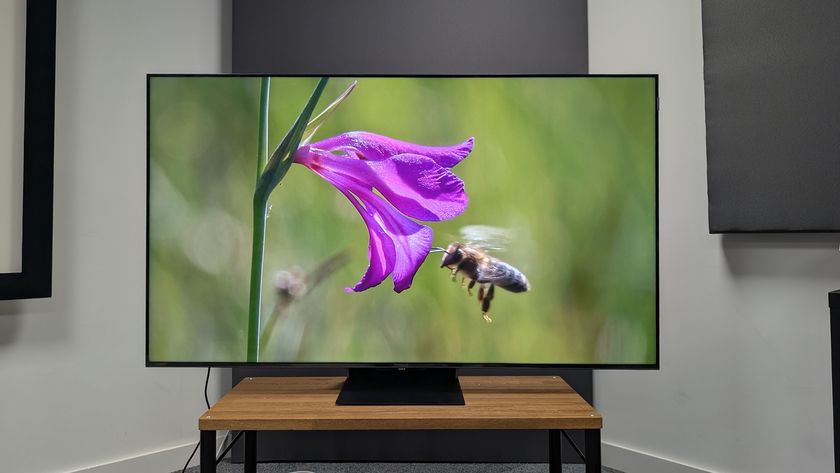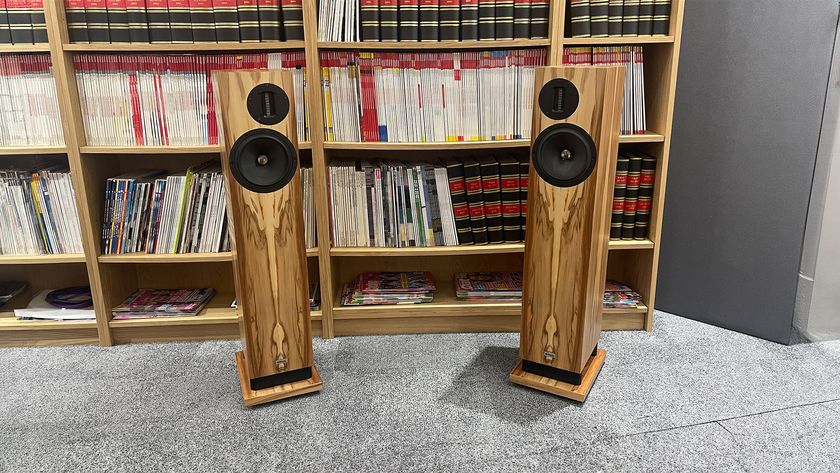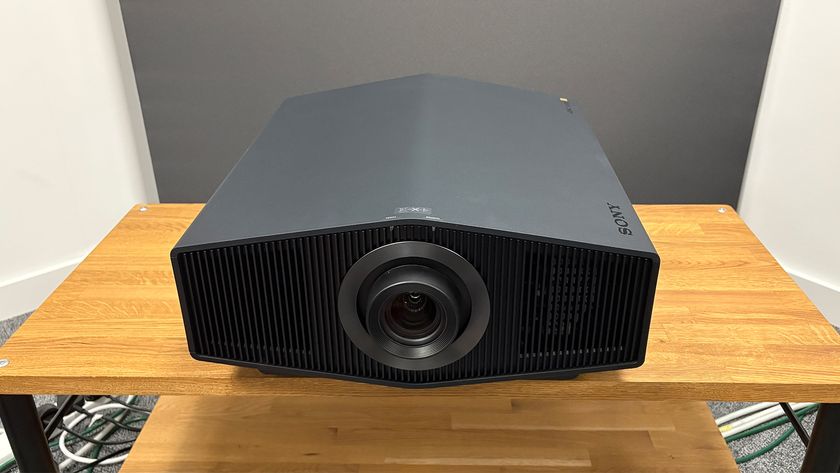What Hi-Fi? Verdict
It may be a more "normal" soundbar compared with the outrageous Ambeo Max, but the new Ambeo Plus impresses where it counts
Pros
- +
Wide soundfield
- +
Good musical ability
- +
Easy app set-up and controls
Cons
- -
Vocals a little vague and over-processed in Ambeo mode
- -
Against tough competition
Why you can trust What Hi-Fi?
Sennheiser’s original Ambeo soundbar (now renamed the Ambeo Soundbar Max) hit the scene a few short years ago and has, until now, remained the only child in Sennheiser’s soundbar family. It has remained in the spotlight since its launch in 2019, but it's hard to ignore the elephant in the room (which is ironic as it is the elephant of the soundbar world): while its weighty and space-filling sound demands your attention, it's also a weighty, space-filling behemoth of a unit.
So let's say you want that signature Sennheiser pedigree in a soundbar that doesn’t weigh almost 19kg. Enter, the Ambeo Plus, the Ambeo Max’s slightly less brash and bold cousin, which looks more like your traditional soundbar thanks to a slimmer profile and narrower build. But does this makeover sacrifice the Ambeo spirit? A little, but it’s still a very talented soundbar in its own right.
Price
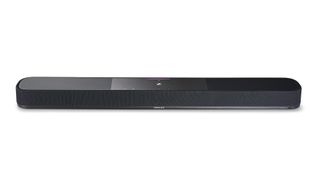
The Sennheiser Ambeo Plus starts at £1299 / $1500 / AU$2400, which is interesting for many reasons. First of all, we need to address the Ambeo Max, which originally retailed for £2199 / $2500 / AU$4000, making this new Ambeo seem like a relative bargain. However, since the Max has been knocking around for a few years, it has seen a considerable price decrease. We’ve seen it at £1799 / $2000 / AU$3195 across many retailers recently, making the value proposition of this new Ambeo in comparison to its beefier relation a little less clear cut.
However, the bottom line is that the Ambeo Plus is still a fair whack cheaper than the Max. That, though, puts it in direct competition with Sony’s formidable HT-A7000 – a soundbar so good that it has just won Product of the Year for the second year in a row at the What Hi-Fi? Awards.
The Ambeo Plus is a fully functional soundbar in its own right, but Sennheiser does offer a wireless subwoofer that can be purchased separately. The Sennheiser Ambeo Sub is a £599 / $700 / AU$1120 optional addition if you still have some money left over after the initial cost of entry.
Build
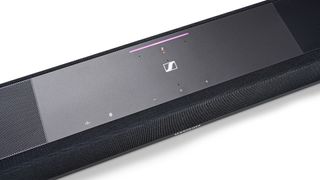
Hardware is something that we can often depend on Sennheiser to impress us with, and the Ambeo is no exception. The soundbar is supremely solid and has a quality finish all round. With a smooth plastic construction that weighs just 6.3kg, the Ambeo Plus is a much more svelte and manoeuvrable soundbar compared to its more cumbersome sibling.
At 105cm long and just under 8cm in height, the Ambeo Plus is also much shorter and narrower than most other soundbars in its class, including the Sony HT-A7000 and Sonos Arc. The Ambeo is therefore notably compact for its class, making it a solid option if you’re working with a more confined set-up arrangement.
Features
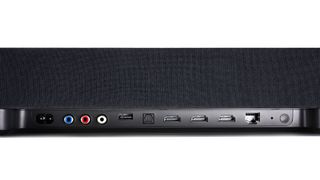
Starting off with the port selection, you have eARC via an HDMI 2.1 socket, two HDMI 2.0 inputs, optical and RCA inputs, an ethernet connection and a USB socket for powering a streaming stick.
The HDMI inputs are a sticking point here, as their 2.0 certification means they can't support 4K/120Hz gaming (VRR isn’t supported either). The Sony HT-A7000 does feature 4K/120Hz support, so it’s a frustrating omission from Sennheiser – especially when you are already sacrificing one of your TV’s precious HDMI 2.1 connectors for eARC. The Sennheiser at least trumps the Sonos Arc here, as that soundbar doesn’t include any HDMI passthrough connectors.
The Sennheiser’s eARC connection is still worth celebrating as it allows for Dolby Atmos playback in the higher-quality True HD format, although all current streaming services use the lower-bitrate Dolby Digital+ format for delivering their Dolby Atmos soundtracks. It’s not just Dolby codecs getting the love here though, as DTS:X, MPEG-H and Sony 360 Reality Audio are also all supported.
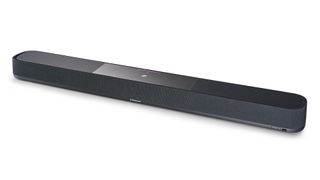
Inputs HDMI 2.0 x2, HDMI eARC x1, Optical, RCA line In
Video Passthrough 4K HDR Dolby Vision
Audio format support Dolby Atmos, DTS:X, LPCM, Dolby Digital Plus, Dolby True HD, Sony 360 Audio, MPEG-H
Wi-fi? Yes
Bluetooth 5.0
Streaming Apple AirPlay 2, Chromecast, Spotify Connect, Tidal Connect
Dimensions (hwd) 7.5 x 105 x 12cm
Weight 6.3kg
Wireless connectivity is also on board the Ambeo Plus, with Bluetooth 5.0 and wi-fi both playing integral parts for the Sennheiser Smart Control app. You’ll be using this app a lot both for initial set-up and in daily use of the soundbar, so we recommend taking the time to familiarise yourself with the various settings menus. Thankfully, the app is a breeze to use with plenty of helpful settings available to customise your Ambeo experience, and its snappy response and general convenience mean that we often reach for our phone before the dedicated remote that’s bundled with the soundbar. That’s not to discredit the remote, however, as it's a sturdy and responsive controller with appreciated easy access to different sound presets.
The Ambeo Plus also features a plethora of wireless streaming options when it comes to music services. Bluetooth is the obvious catch-all when it comes to wireless streaming to the device, but you’ll also find Apple AirPlay 2, Spotify Connect, Tidal Connect and Google Chromecast all built in. You’d be hard-pressed to find a device or service that you can’t hook up to the Ambeo Plus, and we’re pleased to report that getting music to play wirelessly on the Ambeo is a seamless process. In fact, Sennheiser gets bonus points for the integrated music player that pops up in the Smart Control app, meaning you can control your music and all the soundbar functions in one convenient place.
Within the Smart Control app, you’ll find a plethora of ways to adapt and customise the Ambeo’s sound, including dedicated presets for different content (although the handy adaptive mode works nicely if you don’t want to fiddle), as well as ways to view and switch audio codecs. Here you will also find the namesake Ambeo button, which is used to switch the Ambeo mode on and off. But what exactly is Ambeo? It's Sennheiser’s custom processing that enhances spatial immersive audio. It works alongside the likes of Dolby Atmos to further the immersive audio effect. In practice, it certainly creates the illusion of wider soundscapes, but it’s not without its downsides – more on that later.
On the topic of immersive audio, we’d be remiss not to mention the Ambeo’s clever room calibration system. Using its array of four built-in, far-field, high-precision microphones, the Ambeo features a much more straightforward form of room calibration than its Max counterpart and other soundbar rivals. You don’t need to plug in and position an external microphone awkwardly until you reach the sweet spot, or waltz around your room scanning your walls and ceiling with your smartphone. Instead, you just tap the calibration button in the app and the soundbar does the rest. It only takes around three minutes to calibrate the soundbar, and it sounds much better for it with improvements to spatial sound.
At last, we come to the speaker configuration of the Ambeo Plus. Housed within the modest chassis are nine speakers, comprising seven full-range aluminium drivers and dual 10cm subwoofers. Two of the full-range drivers and both subwoofers face upwards to reflect sound for overhead immersive audio, and another two drivers point diagonally outwards on the corners of the soundbar to create a wider spread of sound.
Sound
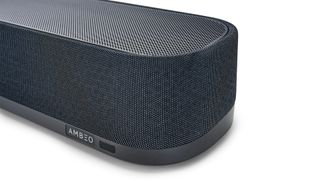
It might be physically compact, particularly compared to its sibling, but the Ambeo Plus still has a frankly astonishing ability to fill a room with sound despite its much smaller footprint. There is a distinct difference between the Ambeo setting being on and off, and it really depends on personal preference as to whether you’ll want to use it.
The Ambeo setting allows for a much broader soundstage – however, it can sacrifice precision as a result. In the early moments of Blade Runner 2049, the sweeping soundtrack feels thunderous with the impressively weighty bass of the soundbar, and it avoids the bottoming out and distortion that this scene can often expose in other devices. Officer K’s descent into the dystopian concrete jungle of Los Angeles feels appropriately spacious, with the ambient sounds of the city including humming vehicle engines and holographic advertisements punching through with clarity as well as feeling appropriately placed according to their position on-screen.
It's when we get to the infamous “Interlinked” baseline interview that the Ambeo mode seems to struggle somewhat, with the spacious sound feature not suiting the smaller-scale conversational scene. Admittedly, the interviewer’s voice is intended to be coming from a speaker device as he is not in the room, but the Ambeo’s vocal processing means that the voice sounds directionless and somewhat echoey, to the extent that it’s actually harder to follow what is being said. Switching off the Ambeo setting solves this, but it also somewhat reduces the spaciousness and scale of the presentation. It's a shame that Sennheiser hasn't quite created a best-of-both-worlds setting that offers a perfect balance between spatial sound and dialogue, but perhaps this is something that could be improved in a future software update.
Switching to Netflix’s The King playing in Dolby Atmos, the Ambeo is totally in its element providing grand and spacious soundstages to match the epic scenes on screen. In the rousing speech performed by Timothée Chalamet’s Hal before the Battle of Agincourt, the Ambeo Plus’ impressively wide sound ensures his voice carries and fills the space authentically – making it feel at times as if we are really there among the soldiers. There is still that hint of slightly ill-defined direction at times with the Ambeo mode, though, and when it's turned off the voices sound much more natural. It's a tradeoff that we find consistently happening through using the Ambeo Plus, and one that depends on whether we prefer scale or a clearer and more authentic sound for a particular scene.
When the action ramps up and arrows go flying overhead, the Ambeo’s Dolby Atmos handling is spectacular, with a truly impressive sense of height achieved via the upward-firing speakers. As chainmail-clad soldiers smash into one another and chaos ensues, the Ambeo puts you at the heart of the action with thunderous metal clunks and battle cries erupting from all around.
An Atmos demo included as part of the Sennheiser Smart Control App really highlights the capabilities of this soundbar, proving its worth when it comes to height, width and clarity. It’s a short test that flexes the Ambeo’s muscles, and we’d recommend taking a look when you first set the soundbar up as it's both a great way to become acquainted with the ’bar and a flashy and impressive first taste of its Atmos potential.
Finally, the Ambeo Plus is as talented musically as it is with films. Playing the theme from the latest Bond flick, No Time To Die, by Billie Eilish via Tidal Connect, the Sennheiser dazzles with sparkling vocals and grand orchestral sweeps. Both Eilish’s voice and the orchestral score sound detailed and natural, with a solid sense of dynamics throughout the track.
Verdict
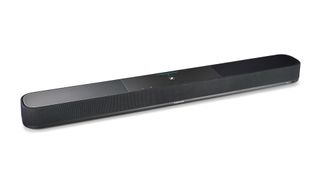
It's easy to see the Ambeo Plus as a scaled-back relative to the Ambeo Max – it's smaller, tamer and is just a much more typical soundbar overall. However, it still feels like an Ambeo device, as Sennheiser hasn’t sacrificed the spacious and grand presentation as a compromise.
There is undoubtedly tough competition from Sony and Sonos here, with the HT-A7000 just edging the Ambeo out, but it's so close – to the point that the Ambeo Plus provides a welcome alternative to the Sony. The Sonos Arc is also a great choice and is a lot cheaper, but the Sennheiser dwarfs it in terms of connectivity and feels like a more fully-featured soundbar overall.
The name Ambeo Plus is the only truly confusing aspect of this device, as it suggests that this is the step-up from another Ambeo soundbar yet it’s only this and the Max in the lineup. So, could we see an even cheaper Sennheiser Ambeo soundbar on the horizon? It certainly seems possible.
In the here and now, though, if you want a Dolby Atmos soundbar that creates a vast room-filling sound from a compact chassis, the Ambeo Plus has to go on your shortlist.
SCORES
- Sound 5
- Features 5
- Build 5
MORE:
Read our full Sonos Arc review
Also consider the Sony HT-A7000
Read our Sonos Beam Gen 2 review
Best soundbars: excellent TV speakers at budget to premium prices
HUNTKLVJG
What Hi-Fi?, founded in 1976, is the world's leading independent guide to buying and owning hi-fi and home entertainment products. Our comprehensive tests help you buy the very best for your money, with our advice sections giving you step-by-step information on how to get even more from your music and movies. Everything is tested by our dedicated team of in-house reviewers in our custom-built test rooms in London, Reading and Bath. Our coveted five-star rating and Awards are recognised all over the world as the ultimate seal of approval, so you can buy with absolute confidence.
